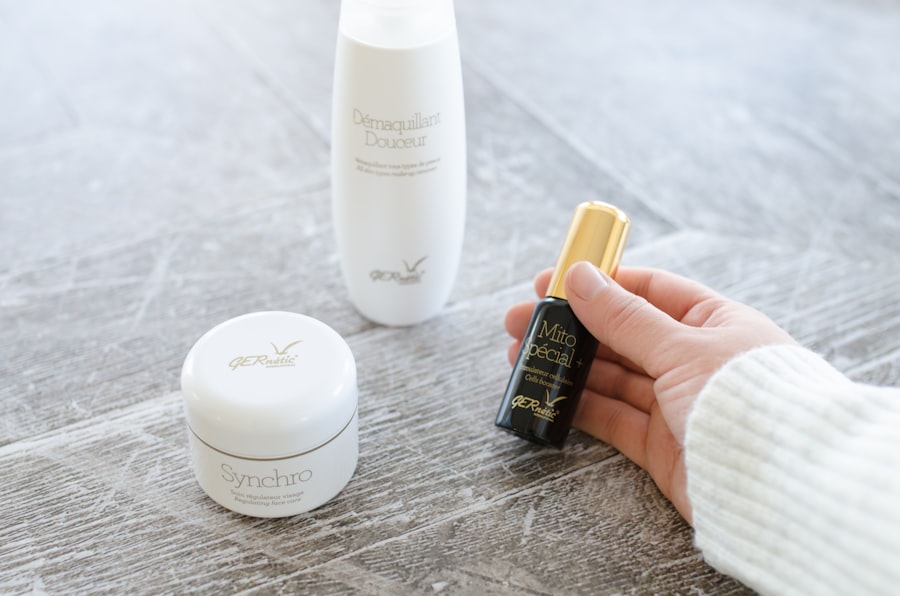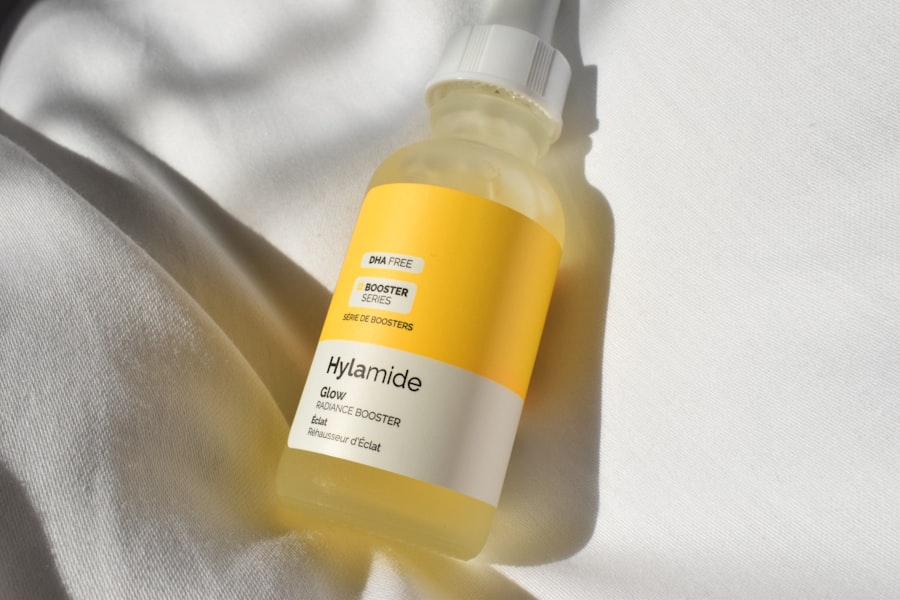Aftercare is a crucial component of the permanent laser hair removal process that you should never overlook. While the procedure itself is designed to provide long-lasting results, the way you care for your skin afterward can significantly influence the effectiveness of the treatment and your overall comfort. Proper aftercare helps to minimize potential side effects, promotes healing, and ensures that you achieve the best possible results from your investment in laser hair removal.
By understanding the importance of aftercare, you can take proactive steps to protect your skin and enhance the longevity of your results. When you undergo laser hair removal, the laser targets hair follicles, causing them to enter a state of dormancy. This process can leave your skin sensitive and vulnerable for a short period.
Aftercare is essential not only for healing but also for maintaining the results of your treatment. Neglecting this aspect can lead to complications such as irritation, pigmentation changes, or even infection. Therefore, it is vital to follow a structured aftercare routine that addresses your skin’s needs post-treatment.
By doing so, you can ensure that your skin remains healthy and that the results of your laser hair removal are maximized.
Key Takeaways
- Aftercare is crucial for the success of permanent laser hair removal, ensuring the best results and minimizing potential risks.
- Proper hygiene and skincare routine can help prevent infections and promote healing after laser hair removal treatments.
- Sun protection and avoiding tanning are essential to protect the skin and prevent hyperpigmentation after laser hair removal.
- Managing potential side effects such as redness, swelling, and discomfort is important for a smooth recovery post-treatment.
- Avoiding irritation and ingrown hairs through gentle exfoliation and proper skincare can help maintain smooth, hair-free skin after laser hair removal.
Proper Hygiene and Skincare Routine
Maintaining proper hygiene and a suitable skincare routine after your laser hair removal session is paramount. Immediately following the treatment, your skin may feel sensitive or slightly irritated. To promote healing, it is essential to keep the treated area clean.
Gently cleanse the area with a mild, fragrance-free soap and lukewarm water. Avoid using harsh scrubs or exfoliants for at least a week after your treatment, as these can exacerbate irritation and hinder the healing process. Instead, opt for gentle cleansing methods that will soothe your skin while effectively removing any impurities.
In addition to cleansing, incorporating a suitable skincare routine is vital for optimal recovery. After washing the area, consider applying a soothing gel or cream that contains ingredients like aloe vera or chamomile. These natural ingredients can help calm inflammation and provide relief from any discomfort you may experience.
Your skin will be more sensitive than usual, and using harsh products can lead to adverse reactions. By prioritizing gentle care during this time, you can support your skin’s recovery and enhance the results of your laser hair removal.
Sun Protection and Avoiding Tanning

One of the most critical aspects of aftercare following laser hair removal is sun protection. Your skin will be particularly sensitive after treatment, making it more susceptible to sunburn and pigmentation changes. To safeguard your skin, it is essential to apply a broad-spectrum sunscreen with an SPF of at least 30 every day, even on cloudy days.
This protective measure will help shield your skin from harmful UV rays that can cause irritation and compromise the results of your treatment. In addition to sunscreen, it’s advisable to avoid direct sun exposure for at least two weeks following your session. If you must be outdoors, wearing protective clothing such as long sleeves and wide-brimmed hats can provide an extra layer of defense against UV rays.
Tanning beds should also be avoided during this period, as they can further damage your sensitive skin and lead to unwanted side effects. By taking these precautions seriously, you can help ensure that your skin heals properly and that the results of your laser hair removal remain intact.
Managing Potential Side Effects
| Side Effect | Management |
|---|---|
| Nausea | Take medication with food, stay hydrated |
| Fatigue | Get plenty of rest, engage in light exercise |
| Hair loss | Consider wearing a wig or headscarf, use gentle hair care products |
| Diarrhea | Avoid spicy and greasy foods, stay hydrated |
While laser hair removal is generally safe and effective, some individuals may experience side effects such as redness, swelling, or mild discomfort in the treated area. Understanding how to manage these potential side effects is an essential part of your aftercare routine. If you notice any redness or swelling, applying a cold compress can provide immediate relief and help reduce inflammation.
Simply wrap ice in a clean cloth or use a gel pack and gently place it on the affected area for short intervals. If discomfort persists beyond a few hours or worsens over time, over-the-counter pain relievers like ibuprofen or acetaminophen can be helpful in alleviating pain. However, always consult with your healthcare provider before taking any medication to ensure it’s appropriate for your situation.
Additionally, if you notice any unusual symptoms such as blistering or excessive swelling, it’s crucial to contact your practitioner immediately for guidance. Being proactive in managing side effects will not only enhance your comfort but also contribute to a smoother recovery process.
Avoiding Irritation and Ingrown Hairs
Post-laser hair removal care also involves taking steps to avoid irritation and ingrown hairs, which can be common concerns after treatment. To minimize irritation, refrain from engaging in activities that may cause excessive sweating or friction on the treated area for at least 24 hours post-treatment. This includes avoiding intense workouts or tight clothing that may rub against your skin.
Allowing your skin to breathe and recover without added stress will significantly reduce the risk of irritation. Ingrown hairs can also be a concern after laser hair removal, especially if you have a history of them. To prevent this issue, consider incorporating gentle exfoliation into your skincare routine about a week after treatment.
Using a soft washcloth or an exfoliating glove can help remove dead skin cells that may clog hair follicles and lead to ingrown hairs. However, be cautious not to over-exfoliate or use harsh scrubs immediately after treatment, as this can irritate sensitive skin. By taking these preventive measures, you can enjoy smoother skin without the discomfort of ingrown hairs.
Regular Moisturizing and Exfoliation

Keeping your skin well-hydrated is another essential aspect of aftercare following laser hair removal. Regular moisturizing helps maintain skin elasticity and prevents dryness, which can be exacerbated by the treatment process. Opt for a fragrance-free moisturizer that is suitable for sensitive skin; this will help soothe any irritation while providing essential hydration.
Applying moisturizer daily will not only keep your skin comfortable but also support its healing process. Exfoliation plays a vital role in maintaining healthy skin post-treatment as well. Once your skin has fully healed—typically about one week after treatment—incorporating gentle exfoliation into your routine can help prevent dead skin buildup and promote cell turnover.
This process aids in keeping hair follicles clear and reduces the likelihood of ingrown hairs developing in the future. You might consider using chemical exfoliants like alpha-hydroxy acids (AHAs) or beta-hydroxy acids (BHAs) for a gentle approach that won’t irritate sensitive skin. By combining regular moisturizing with thoughtful exfoliation, you can maintain smooth and healthy skin long after your laser hair removal sessions.
Following Post-Treatment Instructions from Professionals
One of the most effective ways to ensure successful aftercare is by diligently following the post-treatment instructions provided by your laser hair removal professional. Each practitioner may have specific guidelines tailored to their techniques and equipment used during the procedure. These instructions are designed with your safety and comfort in mind; therefore, adhering to them is crucial for achieving optimal results.
If you have any questions or uncertainties about the aftercare process, don’t hesitate to reach out to your practitioner for clarification. They are there to support you throughout your journey and can provide personalized advice based on your unique skin type and treatment experience. By actively engaging with your provider and following their recommendations closely, you’ll be better equipped to navigate the post-treatment phase successfully.
Long-Term Maintenance and Touch-Up Treatments
While laser hair removal offers long-lasting results, it’s important to recognize that some individuals may require long-term maintenance or touch-up treatments to achieve their desired outcome fully. Over time, hormonal changes or other factors may lead to new hair growth in previously treated areas. Staying informed about potential touch-up sessions will help you maintain smooth skin over the long term.
Typically, practitioners recommend scheduling touch-up treatments every 6-12 months after completing an initial series of sessions. This timeline may vary based on individual factors such as hair growth patterns and hormonal fluctuations. By committing to these follow-up appointments, you can ensure that any new hair growth is addressed promptly while preserving the results of your initial treatments.
Embracing this long-term maintenance approach will allow you to enjoy the benefits of laser hair removal for years to come. In conclusion, aftercare plays an indispensable role in ensuring the success of permanent laser hair removal treatments. By prioritizing proper hygiene, sun protection, managing side effects, avoiding irritation, regular moisturizing and exfoliation, following professional instructions, and committing to long-term maintenance, you can maximize the benefits of this innovative hair removal method while keeping your skin healthy and radiant.



